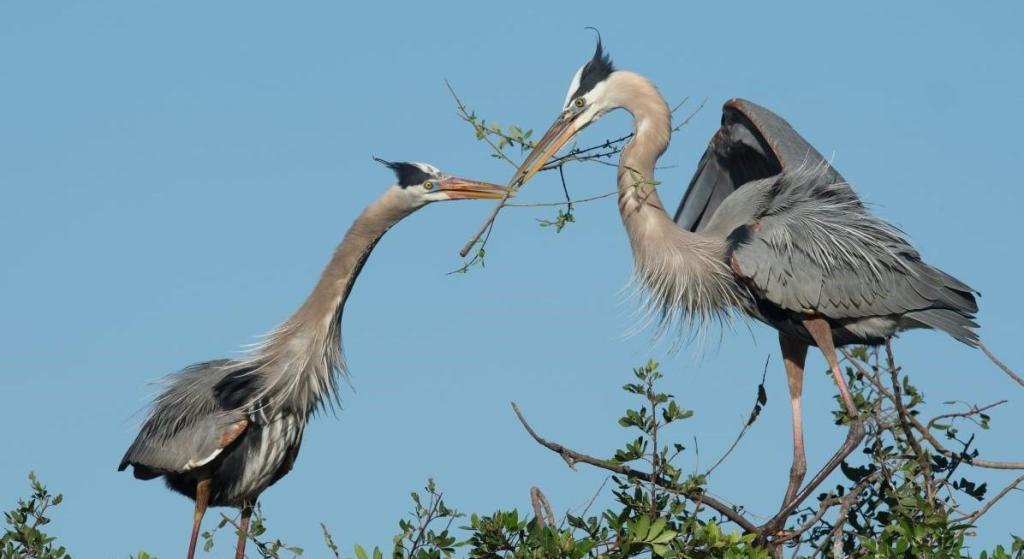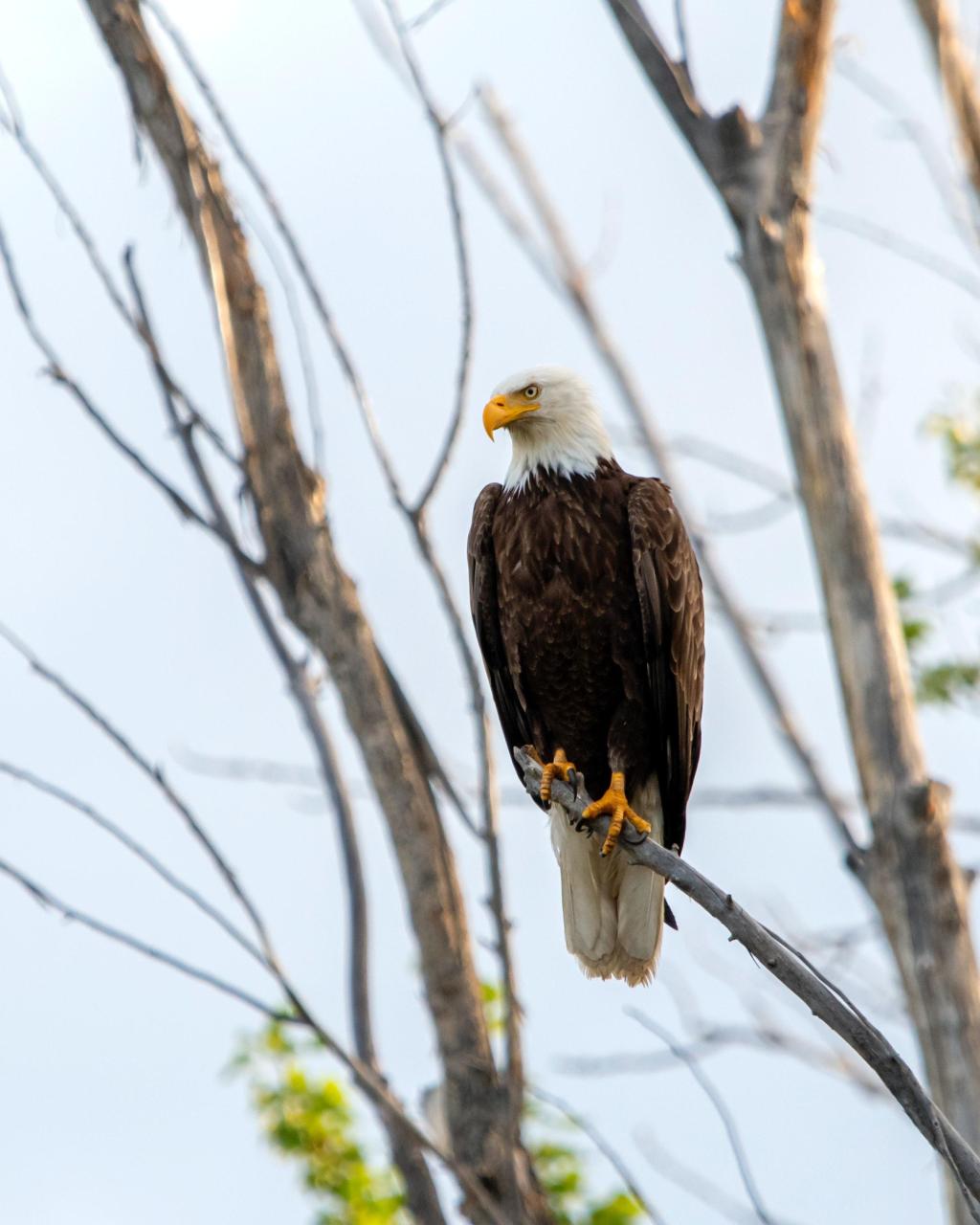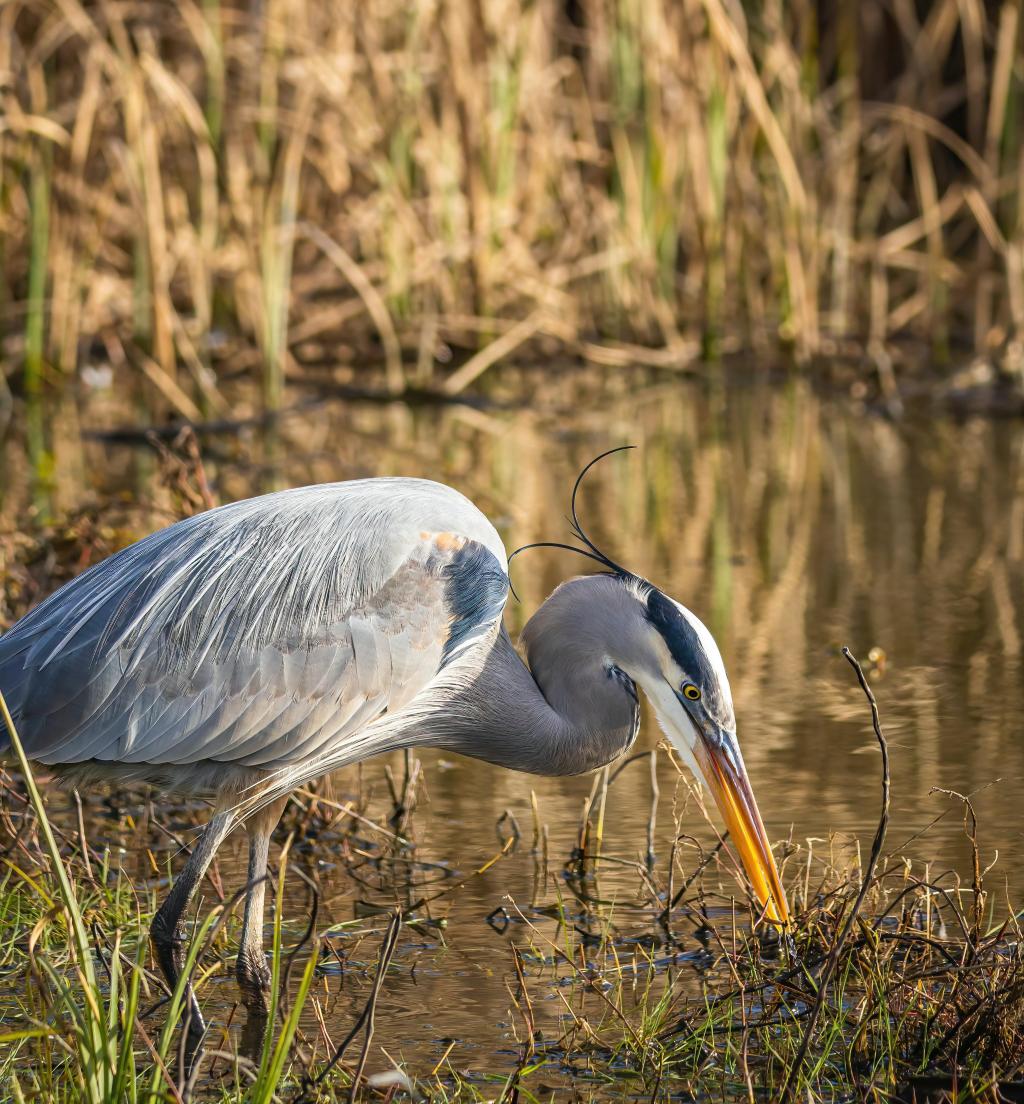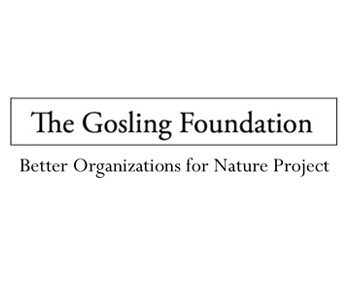The Pacific Great Blue Herons have adapted their nesting behavior in response to the increasing population of bald eagles - and can be seen doing so right onsite at our nature reserve.
Despite the fact that bald eagles are known to prey on heron nestlings and have been implicated in the recent decline of heron reproduction, herons have started to nest near breeding eagles. The hypothesis behind this change is that the territorial behavior of eagles provides protection for the herons.
Observations have shown that nesting eagles repelled other eagles within a 250-meter radius of their nest site, creating a relatively safe space for the herons.
Surveys also revealed that 70% of heron nests and 19% of heron colonies were located within 200 meters of eagle nests with high reproductive success. These herons had higher reproductive success compared to those that nested far from eagle nests.
The eagle nest on the nature reserve has fallen three times in recent years, and each time our heron colony shifts location to track closer to the eagle's new nesting location.
This unique adaptation is one of many ways that herons, and other wildlife, may adapt to ensure their young's best chance of survival.










